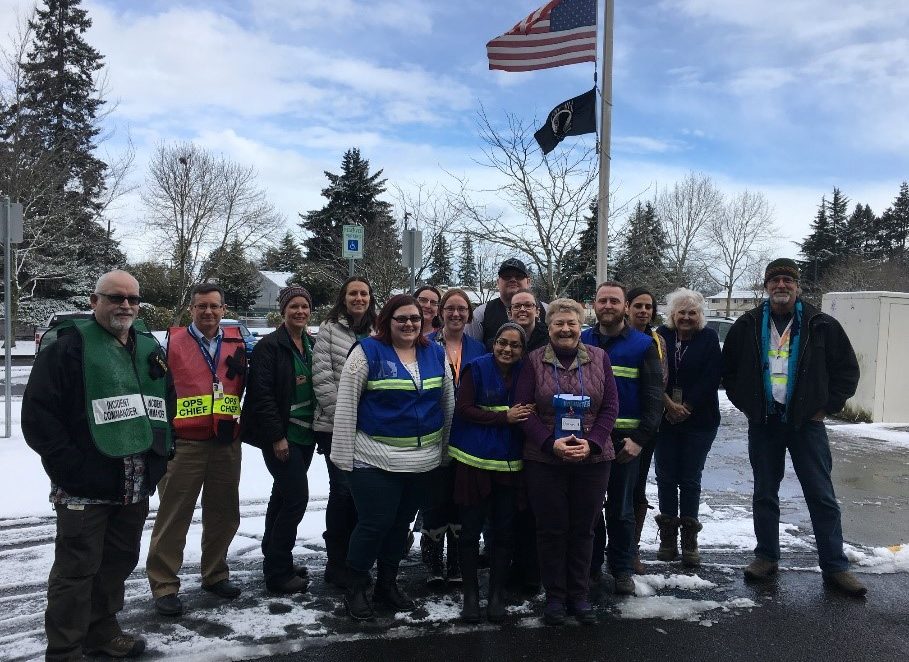July 1, 2019
Responding to the Measles Outbreak: Perspectives From a Clark County Nurse

Measles is a highly contagious disease – nearly nine out of 10 susceptible individuals who are exposed will become infected. On Dec. 31, 2018, a child visiting Clark County was diagnosed with measles. Due to their lower-than-average immunization rates*, Clark County experienced an outbreak of the illness.
When the county’s outbreak was declared over four months later, 71 measles cases were confirmed; unvaccinated children younger than 10 years of age were primarily affected.
In this post, we learn more about the process local public health staff went through during the measles outbreak, as well as reflection and insight from Brianna Dannen, a public health nurse at the Clark County Public Health, who also co-chairs the Clark County Immunization Coalition.
Responding to the Outbreak
Local public health staff worked to identify susceptible individuals who were exposed to measles and identify potential exposure sites, including schools, healthcare facilities, childcare centers, grocery stores, shopping centers and sports arenas. Using this information, public health staff began community outreach and communications about exposure locations and steps to take if individuals were exposed or developed symptoms. In addition, staff monitored susceptible individuals who had been exposed and investigated new cases. As the outbreak grew, state and national public health staff, along with volunteers, assisted in this work.
In addition to the 71 confirmed cases in Clark County, cases linked to this outbreak were also confirmed in King County, Multnomah County, OR, and Georgia. The extraordinary effort to control this outbreak involved 230 responders, at a total estimated cost of $864,679. Successfully containing the outbreak without experiencing deaths or serious complications highlights the exemplary work of responders. The outbreak was declared over on April 29, after 42 days without a new case.
Q&A with Clark County Public Health Nurse Brianna Dannen
Looking back now, what is your key takeaway?
This outbreak was a great opportunity to see public health in action. It took many people across many agencies coming together to stop this outbreak from spreading further than it did. While there were many successes, there also were some challenges.
What were the successes?
Our biggest success, of course, was stopping the outbreak. The key to this success was our ability to quickly identify new cases and follow up with individuals who may have been exposed to measles. Susceptible individuals who were exposed, but not yet contagious, were advised to stay out of public spaces. This prevented further exposures in our community.
We could not have done this work as quickly as we did without our community partners. These partners included local businesses, hospitals, clinics, schools, community volunteers, the Washington State Department of Health, surrounding local and state public health jurisdictions and the State Public Health Labs in Oregon and Washington. All of these partners worked with us to quickly identify and follow up with susceptible individuals who were exposed, provide immunizations to susceptible community members, and provide post-exposure prophylaxis to high-risk individuals who had been exposed.
What were the challenges?
By far the biggest challenge with this outbreak was the volume of data to manage in a short timeframe. While data management tools were in place for tracking contacts, we had never utilized them with this volume of work. Another big challenge was staffing. The workload quickly exceeded the capacity of our Communicable Disease program.
What were the lessons learned?
The biggest lesson learned was that communication is key and is a large, important part of outbreak response. This includes communicating information to the public, communicating information clearly with external partners, and communicating information internally with those working on the incident.
What are the next steps?
Moving forward, we will continue to promote immunization for all vaccine-preventable diseases in our community. In order to improve immunization rates, we will continue to ensure that vaccines are widely available in our community. Additionally, we will counter misinformation about vaccines by providing factual information about vaccines and the diseases they prevent to our community members. Most of this work is done in partnership with healthcare providers in our community and through the Clark County Immunization Coalition.
The best way to protect against contracting measles is immunization with the MMR vaccine. To learn more about promoting, protecting and supporting immunization as a vital part of the health and development of children and families, visit Immunity Community at https://immunitycommunitywa.org, a program of WithinReach.
* For the 2017-2018 school year, 76.5 percent of kindergarteners in Clark County had all required vaccinations, compared with 85.7 percent for Washington State.




